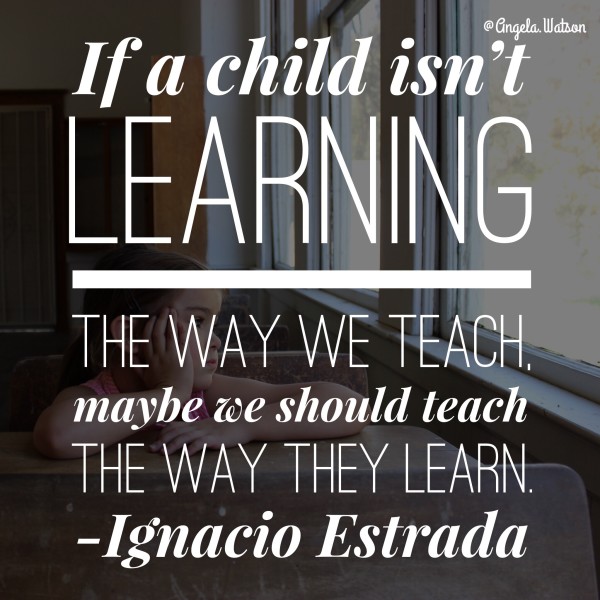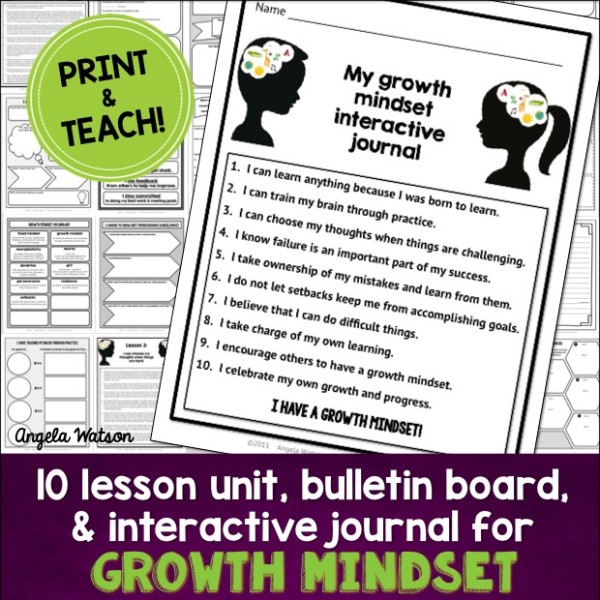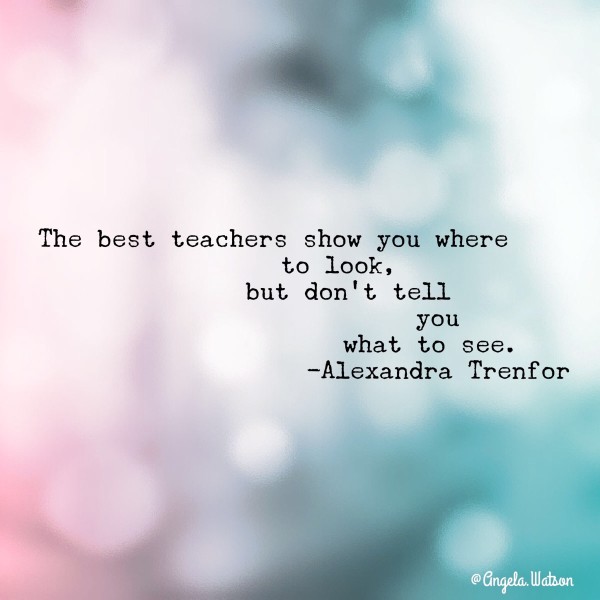You know the exact problem I’m talking about: You’re patiently showing a student how to solve a problem or figure out a process, and the student responds by saying, “Can’t you just tell me the answer?”
Or you’re responding to a student’s question with questions of your own to try to prompt him or her to figure out a solution independently, and the child says, “Can’t you just tell me what to do?”
When kids are unmotivated, the solution is natural: Give them more ownership. In more traditional schools, that might mean homework menus where students have a choice about which type of assignment to complete or other small ways in which kids get to make decisions about their learning. In more progressive schools, we’re seeing an increased focus on project-based learning, Genius Hour, 20% Time, makerspaces, passion projects, and all these wonderful opportunities for students to take charge of their own learning.
These approaches are all designed to make learning more authentic and empower kids to decide what they want to learn about, determine how to learn about it, and choose how they’ll demonstrate their learning. Theoretically, it sounds like the solution: If you make the learning meaningful, kids will be naturally engaged and jump at the opportunity to take ownership.
If your students don’t want to do the work or aren’t doing high-quality work, the problem “must” be that you’re doubting your students and just need to believe in them a little more, and should try entrusting your students with more freedom.

But the reality of what I’m hearing from teachers and what I’m seeing myself in schools doesn’t always quite match that. Even for those of us who believe deeply in helping kids uncover their passions and ask and pursue answering their own questions, the actual implementation of these principles has been a bumpy ride.
It can be tough to get the KIDS on board with student-directed learning. In fact, giving kids more freedom when they’re struggling with the freedom they have is often the worst thing you can do.
Can we get real about the fact that project-based and student-directed learning requires a lot of work not only for teachers but for KIDS?
Kids don’t always want to do that work. And they don’t always have the skills needed to be successful with that work. If you see that students are resistant to or unsuccessful at directing their own learning, in my opinion, the last thing you should do is throw even more projects at them.
I think we need to back up and consider that it takes an incredible amount of drive, focus, and higher level thinking skills for a child to design and carry out a project or participate in Genius Hour or 20% time. Many of our students are used to being spoon-fed the answers or only asked to do simpler rote memory tasks. Transitioning from fill-in-the-blank worksheets completed as a class to project-based learning is very daunting for many kids.

Often we’re expecting kids to transition seamlessly between the two learning styles: One minute we’re cramming multiple choice test prep down their throats and the next, we’re asking them to design a project to showcase their research. These tasks require two completely different skill sets, and they foster two completely different attitudes toward learning. It can be very jarring for students when they’re expected to shift seamlessly between the two approaches.
And if the student is working below grade level, this is all the more true. Simple multiple choice questions feel difficult to them: Imagine how impossible and frustrating a project must be!
So what are the solutions here? We can’t return to our old teacher-centric ways of doing school. We have to support students in being independent and self-motivated. How do we get kids to go from saying “Just tell me what to do!” to truly taking ownership over their learning?
Here are 6 strategies to consider:
1) Explicitly teach and practice the skills needed for student-directed learning.
Kids need to be taught how to manage their time, persevere when things get hard, problem solve when their plan isn’t working, and organize their thoughts and materials. Pay attention to where kids are hitting the proverbial brick wall and then develop mini-lessons to reinforce those skills. Don’t waste your energy bemoaning that students “should” already have these life skills: Be prepared to teach to the students you actually have and support them in developing higher-level thinking abilities.
This growth mindset unit can help teach students that it’s possible for them to learn things that are hard and teaches grit and perseverance.

2) Give students more choice in little things so they know how to make decisions about big things.
We can’t micromanage our students for one set of tasks and then step back and expect them to work independently on another. We have to allow students freedom in the smaller tasks, too. When they’re asked to do things in a very precise way — such as bubbling in standardized tests — we need to acknowledge the mindset shift that’s required of our kids in this situation. Start by giving kids more choice just in your classroom routines: Choosing where to sit, which assignment to complete first, and so on. Ask yourself Alan November’s famous question: What am I doing in my classroom right now that I could theoretically turn over to students to do themselves?
3) Give additional structure to the kids who need it.
Some children thrive under open-ended directions: Others are terrified of making a mistake or have no idea what to do next. Give the kids in that latter group a little more support: Help them create a checklist of steps, and provide them a partner they can check in with if they feel like they’re losing their way. It’s okay to provide more guidance than you’d like for certain kids who need it: Scaffold their learning and slowly increase their capacity so that with each successive project, they’re able to be more independent.

4) Explore topics you’re not the expert in and questions that you don’t know the answer to.
Kids get frustrated and beg us to tell them the answers because they know we already know. They see that there’s a clear, right answer that we are dangling over their heads and saying, “Just a little higher! You can do it! Come on!” How frustrating that is for kids, and no wonder they want us to make that answer a little easier for them to reach. But what if we sometimes explored questions together? What if we said to our kids, “I don’t know the answer; how do you think can we find out?” Show kids that we are ALL learners and model for them how to pursue answers.
5) Pose essential questions which have no right or wrong answer.
In addition to the basic recall questions, there must be some greater, overarching question that compels kids to dig more deeply. “What is the capital of our state?” is important to know (come on, you shouldn’t always be Googling basic facts!) but there are bigger questions that are truly worth answering, too. “How does geography affect destiny? How would your life be different if you were born in the state capital instead of in our small town?” These are questions that students can’t beg you to reveal the answer to because each person has to uncover the answer for him or herself. The responses will be unique to each individual, which takes some of the pressure off of kids and makes the question more compelling.
6) Let kids help design the learning outcome.
Often students resist creating their own projects or directing their own learning because they know that the teacher already has a set goal in mind, whether we state it outright or try to pretend that kids are in control. They know that we have already envisioned what an A+ project will look like and it’s overwhelming for them to play the guessing game of not only trying to meet that expectation but to also design the learning process to get them there.
So, try creating the outcome together. Ask, “How will we know whether you have achieved your goal? What would it look like to show mastery of this topic? How should we assess your learning? What criteria should go into the rubric?” Then if students try to get you to take over their project or ask “Is this right?” you can say, “This is something you designed. You determined what the outcome would be, so you are capable of determining if you are on the right path. Let’s look at the rubric you created and see how we can get you to the top level.”
No time to read and just skimmed through the post? Listen instead!
This post is based on the latest episode of my weekly podcast, Angela Watson’s Truth for Teachers. A podcast is like a free talk radio show you can listen to online, or download and take with you wherever you go. I release a new 10-15 minute episode each Sunday and feature it here on the blog to help you get energized and motivated for the week ahead. I’d love to hear your thoughts below in the comment section!
![]() See blog posts/transcripts for all episodes
See blog posts/transcripts for all episodes
Subscribe to the podcast in iTunes
Subscribe to the podcast in Stitcher
<
The Truth for Teachers Podcast
Our weekly audio podcast is one of the top K-12 broadcasts in the world, featuring our writers collective and tons of practical, energizing ideas. Support our work by subscribing in your favorite podcast app–everything is free!
Explore all podcast episodes
Angela Watson
Founder and Writer
Discussion
Leave a Reply
OR

Join our
community
of educators
If you are a teacher who is interested in contributing to the Truth for Teachers website, please click here for more information.



















Maybe you may have a student with hidden disabilies but is also intelligent aka twice exceptional learner in your classrooms. These students are often accused of being unmotivated and lazy. Often these students know the answers but don’t like speaking up or drawing attention to themselves.
Excellent point. There is not necessarily a correlation between motivation levels and ability.
Great topic and post Angela. We’re going feature this post in our upcoming newsletter (EdScoop). The mindshift students (and teachers, parents, etc) have to go through is a process, not the flip of a switch. If you’re not familiar with Project Foundry, check it out. We not only keep track of everything going on in this kind of learning, but also help people step into it at their own pace, to ensure the best chance of success.